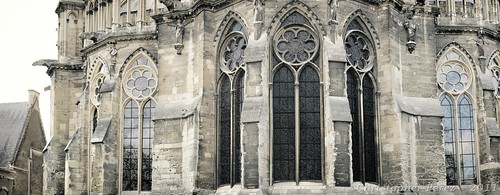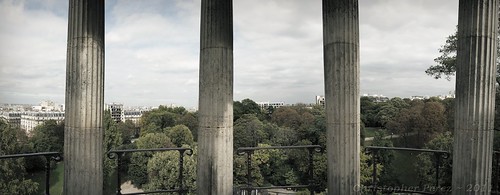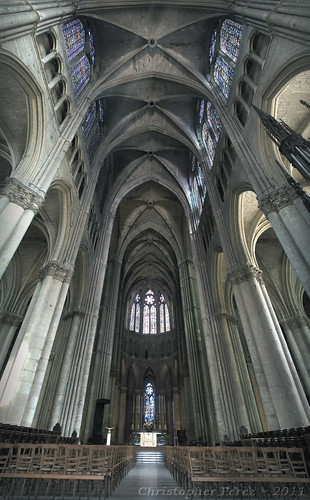Yet, there are some interesting changes taking place in the photographic industry that are having a direct impact on my "vision" and ability to "see" a final image. This entry explores one of the new tools that I've found particularly interesting.
I recently purchased a pair of Sony NEX5 to take with me to Europe this Fall. One had a 16mm f/2.8 lens and the other had Sony's fabulous 18-200mm f/3.5-6.3 SEL superzoom. As you likely already know, Sony introduced the NEX series with the ability to perform in-camera image stitching. The function produces a jpg file from a series of images that the camera makes when the camera moved in a sweeping arc.

When the NEX firmware was capable of creating these kinds of in-camera stitched panoramic images, I knew I had to try it out. The reason is related to something I've been pursuing in one form or another for over 20 years. At the height of my large format film camera Madness, I owned an incredible Folmer and Schwing 12x20inch monster, complete with lenses (Fuji, Schneider, Zeiss). This camera was shortly followed with an equally incredible Korona 7x17inch mini-monster.
I never really made any images of value with either of these camera systems. Well, perhaps I did with the 7x17 Korona. I have a stack of negatives I've never printed of steam locomotives that I shot using a Kodak 250mm Wide Field Ektar. So the jury is still out. The fact I don't have anything to really show for those early efforts lends credence to the rumor that I'm completely mad about camera equipment and not image making.
A decade down the road, many gallery showings, magazine publications, and awards of all kinds later, I may finally be able to dis-spell those early evil but entirely likely true rumors of my insanity. It took me that long to finally believe what I said to my friends and colleagues. The image is all that matters. How you get there does not.

Moving along to the Digital Age and thinking about how I could get a large detail filled file and create a panorama, I have used several image stitching software packages. I found I like the wide narrow aspect of panoramas. Some of my better work included software stitched panoramas from inside steam engine cabins. These software applications were used outside of the camera and on a computer during post-processing. So when working in the field, I had to rely on my abilities to provide enough overlap between frames to ensure a decent panorama result.
Enter the Sony NEX5.

In-camera panorama creation is great! Now I can see panorama image results in the field. This allows me to make adjustments in exposure, field sweep, and composition from one image to the next. The number of, to me, interesting panoramas I come back with has suddenly increased.
When my wife and I recently visited Paris, France, I was keen to try my hand at in-camera panorama generation. The images here are some of the first results of this exercise. To say I'm thrilled would be an understatement.
Does in-camera panorama creation supplant my earlier software stitch processes? No. It only enhances what I can come away with.
The last image shared here is an example of a software stitched panorama that I took on the same Paris trip. I hand held the camera and shot off images one at a time in an upward sweeping motion. I did this because I wanted to see if I could keep the shadow area noise level to a minimum by shooting RAW images in place of jpgs.

It doesn't matter, actually. A good image is a good image, whether it's shot as RAW or in-camera processed jpg original files. As an academic exercise, I'm satisfied with both results.
It feels like I'm coming back with more and more images that please me. Which leads me to believe that new photographic image making tools are helping me create broader range of expressions.